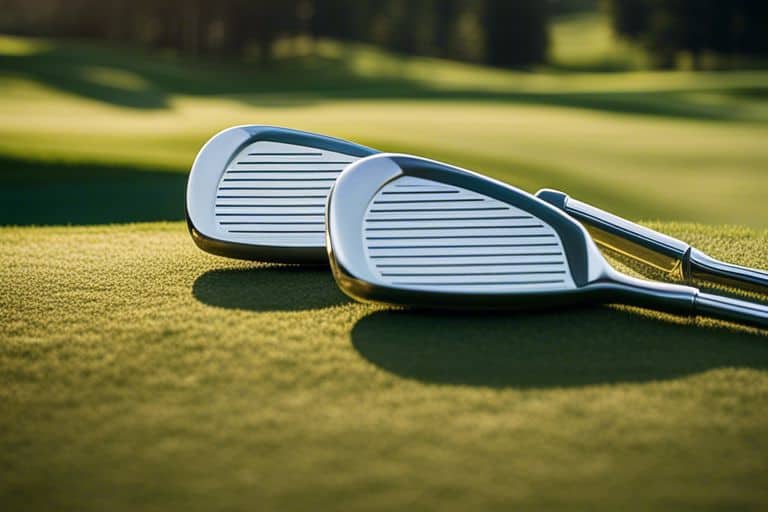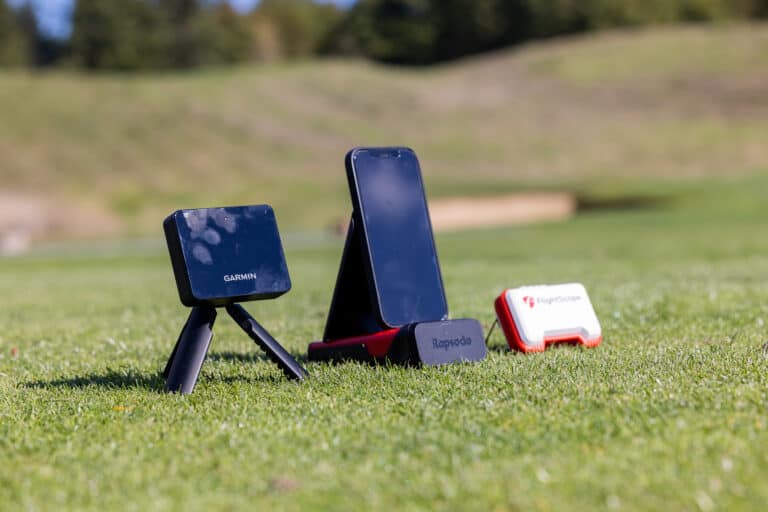What is the difference between a blade and a cavity back iron in golf?
Perplexed by the contrasting appearance of blade and cavity back irons? Let me shed some light on the dissimilarities between these two types of irons. Blade irons are designed for the more skilled player, with a smaller clubhead and a more concentrated sweet spot, providing greater feedback and control.
On the other hand, cavity back irons are more forgiving and offer a larger sweet spot, making them suitable for beginners and high-handicappers. Understanding the differences between these two types of irons can significantly impact your golf game, so let’s take a closer look at what sets them apart. Stay tuned for an in-depth analysis!
The Blade Iron
Before we dive into the differences between blade and cavity back irons, let’s first take a closer look at the attributes of a blade iron and why some golfers prefer using them.
Definition and Characteristics of Blade Irons
Blade irons, also known as muscle-back irons, are typically preferred by more experienced or highly skilled golfers. They have a thin clubhead with the majority of the club’s weight positioned behind the center of the clubface. This design allows for enhanced control and shot-shaping capabilities, making them ideal for golfers who consistently strike the ball in the center of the clubface.
Advantages of Using Blade Irons
The most significant advantage of using blade irons is the level of precision and feedback they provide. When you strike the ball with a blade iron, you can feel exactly how well you hit the shot, allowing you to make adjustments to your swing and improve your overall consistency. Additionally, the ability to work the ball in different directions is a major draw for skilled golfers who want complete control over their shots.

The Cavity Back Iron
If you are a golfer looking to improve your game, understanding the differences between blade and cavity back irons is crucial. In this chapter, I will delve into the specifics of cavity back irons, explaining the features and benefits of using them over blade irons.
Explaining Cavity Back Irons and Their Features
If you are relatively new to the game of golf, you may be wondering what exactly a cavity back iron is and how it differs from other types of irons. Cavity back irons feature a hollowed-out cavity behind the clubface, which allows for more weight to be distributed around the perimeter of the clubhead. This design feature provides increased forgiveness and stability when hitting the ball, making it easier for players to achieve consistent and accurate shots. Additionally, the larger sweet spot on cavity back irons minimizes the impact of off-center hits, resulting in more consistent distance and trajectory.
Benefits of Opting for Cavity Back Irons
When considering whether to invest in cavity back irons, it’s important to understand the potential benefits they can offer. One of the key advantages of cavity back irons is the enhanced forgiveness they provide. This makes it easier for golfers to make solid contact with the ball, even on mishits, ultimately leading to improved accuracy and distance. Additionally, the perimeter weighting of cavity back irons contributes to a higher launch angle, making it easier to get the ball airborne and achieving a more consistent ball flight. Whether you are a beginner looking to improve your game or a seasoned player seeking more forgiveness, cavity back irons may be the ideal choice for your golf bag.

Comparing Blade and Cavity Back Irons
After understanding the basic differences between blade and cavity back irons, let’s take a closer look at how they compare in terms of performance, suitability for different skill levels, and other important factors. Below, I’ve broken down the key differences between blade and cavity back irons into a convenient table for your reference.
Blade IronsCavity Back Irons
| Thin clubface for better feel | Thicker clubface for more forgiveness |
| Less forgiving on off-center hits | More forgiving on off-center hits |
| Designed for better players with more control | Designed for all skill levels with added distance and higher launch angle |
Performance: Trajectory and Control
When it comes to performance, blade irons typically offer a lower trajectory and more control over shot shaping. This is due to their thin clubface, which allows for enhanced feel and workability. On the other hand, cavity back irons tend to produce a higher launch angle and offer more forgiveness on off-center hits. This can be beneficial for players looking for added distance and a more consistent ball flight.
Suitability for Different Skill Levels
Blade irons are traditionally designed for better players with a more consistent swing and higher level of control. If you have a lower handicap and are confident in your ball-striking ability, blade irons may be a good fit for you. However, cavity back irons are more forgiving and can be suitable for golfers of all skill levels. Whether you’re a beginner or a seasoned player, cavity back irons can provide added distance and help minimize the impact of off-center hits.

Understanding the Difference
With this in mind, I hope you now have a clear understanding of the difference between a blade and a cavity back iron in golf. The blade iron is designed for skilled players who desire maximum control and feedback, while the cavity back iron is more forgiving and provides greater distance and height. Ultimately, the choice between the two comes down to your individual skill level and playing style. It’s important to test both types of irons and see which one feels most comfortable for you.



